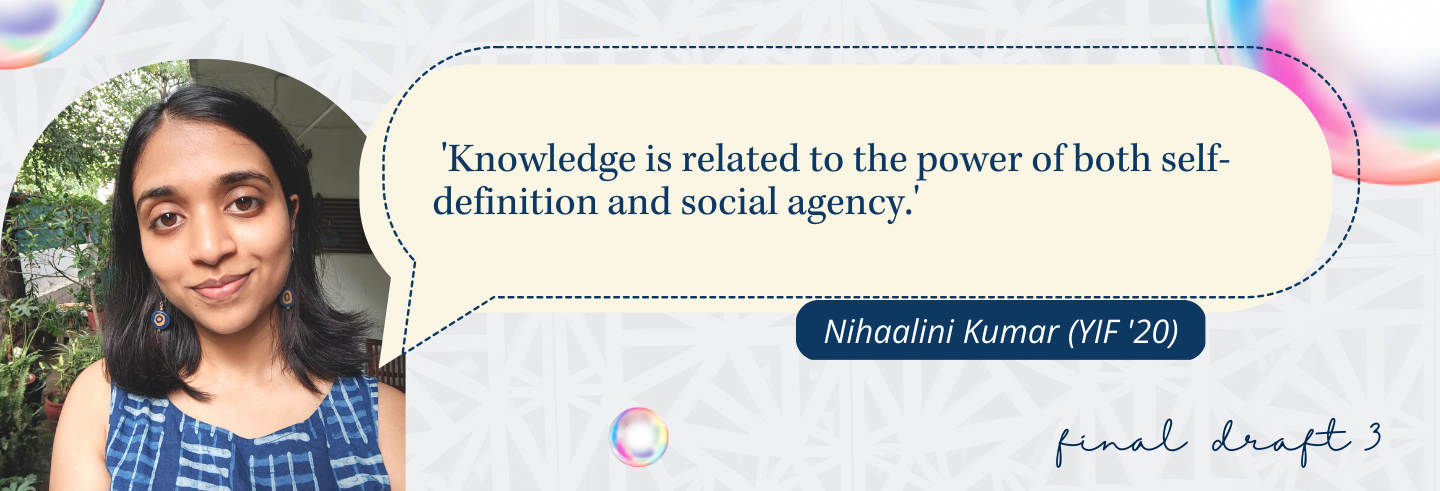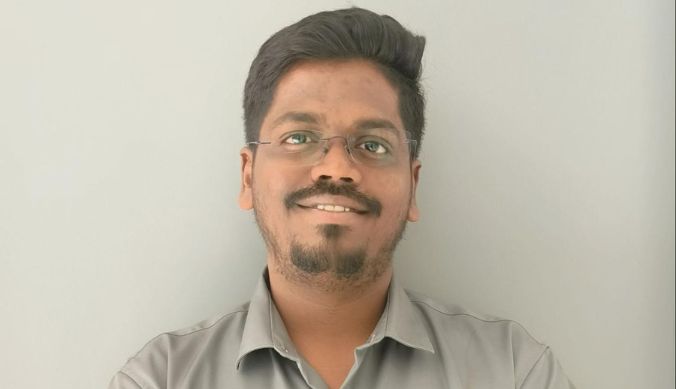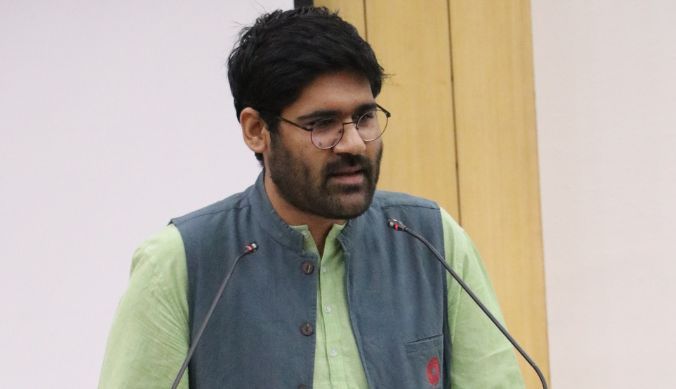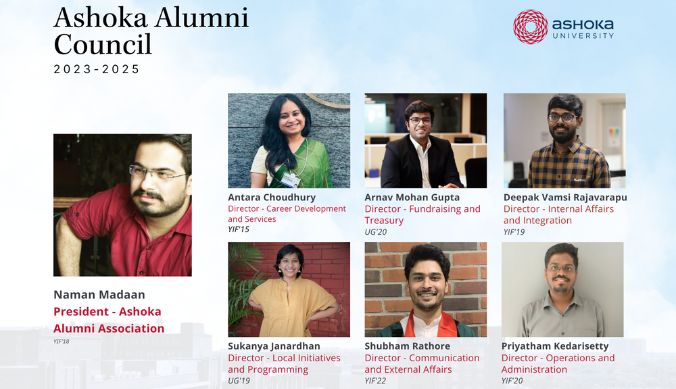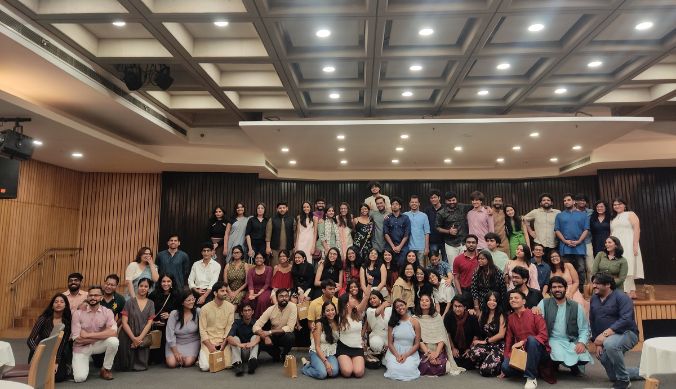‘Education for Change: Social Reconstruction through Critical Pedagogy’
Featuring Nihaalini Kumar’s creative piece that developed as an original project over her term at the Young India Fellowship
Abstract:
Nihaalini makes a case for how universities in India have to play a much more active role in shaping democratic and egalitarian values and practices in society. She proposes how the framework of ‘critical pedagogy’s-emphasizing how educational practice should lead to praxis or informed action–can be contextually adapted within Indian universities to further such a goal.
Article:
From December 2019 onwards, we didn’t know how to continue sitting in our classrooms. The entire country had been shaken by protests in dissent against the Citizenship Amendment Act (CAA) and in solidarity with some of the premier institutions of our country which had been targets of distressing violence—from libraries tear-gassed, to students assaulted in campuses by cops, to hostels rampaged at night by lathi-wielding goons. The biggest shock was that the agencies of law and order—which came under the Union Home Ministry of the BJP-led government—were far removed from fulfilling their role. Instead, they reacted brutally as protestors were beaten up, minors were detained, leaders were arrested, and attempts were made to curb the peaceful—and thus quite legal—protests through Section 144. The police gave a free pass to the goons who attacked JNU (Jawaharlal Nehru University) and eventually arrested no one. Furthermore, as if in a culmination of its cruelty and complacency, the state machinery did not interject when, from 24 February 2020, Delhi saw its worst communal riots since 1984 continue for three days. While the protests had already consumed our lives, the riot left us feeling deeply broken. As we sat through our university classes in a state of despair, helplessness, and anger, we experienced a dichotomy in our lives that made us wonder if it made any sense to continue studying, and if so, what the point of our education was.
The countrywide involvement of students in the protests seemed to make it clear that education could not limit students to the four walls of the university campus. The protests, wherein a common sight was a collective reading of the preamble to the Constitution, were putting the government under scrutiny. Owing to the mixed response of the government which was apathetic as well as reactionary, it became evident that universities were being perceived as a threat to the state’s growing totalitarian power.
What, then, was the role that a university played—or was supposed to play—in the larger collective struggle to uphold democratic and constitutional principles, such as secularism which the protests against CAA and NRC (the National Register of Citizens) represented? Was higher education solely a means to develop the necessary skills and knowledge to enter the job market, or did it also play a larger role in politics and culture in society? Did we need to find a way to bridge the seeming dichotomy between formal education and civic engagement?
The liberal arts programme that I was enrolled in, for instance, seemed to play a significant role in making the students more informed, concerned, and engaged as citizens. It provided the basic knowledge and intellectual skills that can help an individual develop their critical faculty and assert their social agency, which are necessary to partake in a democratic society. Discussions on democracy and social justice formed the basis of the academic content and university culture.
However, I wondered if every university in the country served as a platform for questioning, dialogue, and reasoning. And even if they did, was it enough for a university to simply provide such 194 Education for Change Nihaalini Kumar a space, or did these principles need to be included within the curricula and pedagogy as well? On the other hand, if they didn’t, then could a system or framework of values be developed within which universities could operate that would systemically encourage and facilitate questioning and dialogue?
The first question that one may ask is what such an educational approach may look like, and second, whether and how it could play a role in contributing to dissent, action, and social transformation in society at large. In the mid-20th century, social reconstructionism emerged as a philosophy that stressed the role of education in ‘reconstructing’ society to help make the world a more just, equal, and democratic place. This paper aims to highlight the relevance of this philosophy within the context of Indian higher education. It offers a glimpse into some of the current challenges in higher education in India, enquires about the purpose and limitations of the theory of social reconstructionism, and discusses critical pedagogy as an approach to help rethink and redesign how we understand and practise education.
Challenges in Higher Education in India
Many higher education institutions in India have been critiqued as being structurally oppressive or authoritarian spaces. This is despite the fact that there has been a drastic increase in the number of higher education institutions in India, with a fourfold increase in enrolment since 2001, as highlighted by a Brookings 2019 report (11). The report points out some of the structural issues in higher education institutions (HEIs), including low capacity and accountability, lack of autonomy and adequate funding, and minimal focus on research and innovation. Additionally, HEIs continue to see high rates of suicide, caste and gender-based discrimination, and socio-economic inequalities.
While education is believed to ‘socially uplift’ and ‘empower’ students and contribute to economic growth, the high rate of unemployment only points to the dismal state of higher education in India, writes Anjali Mody in an article on Firstpost. She says that education on its own does not change a lot, but only “reproduces the inequalities [in society]”. It is systematically biased against the socially disadvantaged communities, whether in terms of socioeconomic privileges or social status.
Higher education in India, writes Satish Deshpande, is a space largely based on ‘exclusive inequalities’ of merit, caste, and discrimination. Based on a survey done by the National Sample Survey Organisation (NSSO) in 1999–2000, Deshpande highlights that the share of upper-caste Hindus that are highly educated is double their share in the population. Deeper analysis and several other studies uncover many more caste and gender-based inequalities in higher education, including enrolment in different disciplines, interpersonal experiences on campus, attitudes of professors, graduate professions, and so on. For instance, a study conducted at the All India Institute of Medical Sciences highlighted in an article in the Times of India from 2014, showed that 78 percent of students from SC/ ST and OBC categories reported that they faced discrimination, 88 per cent faced social isolation, 76 per cent said that their papers were not examined properly, 85 per cent said that professors gave them less time than students from upper castes, and 76 per cent said that they have been asked about their caste on campus. Satish Deshpande writes that the continuation of these exclusive discriminatory practices is the product of “durable, self-reproducing mechanisms that are systematic (i.e., not accidental or random) and systemic (i.e., relating to system properties rather than to the attributes of individuals)” (Deshpande 2439).
One of the counterarguments against caste discrimination in higher education is that reservation is not based on ‘merit’ and disadvantages people from upper castes who may ‘meritoriously’ earn those seats. However, while universities boast of merit-based methods of assessment, the argument for meritocracy ignores resource-based inequalities. It does not acknowledge that performance in examinations, while supposedly based on merit, is also based on resource merits, namely, as Deshpande writes, economic, social, and cultural resources, which are distributed unequally in society (Deshpande 2443).
Add to these deeply entrenched social inequalities, the trends in enrolment, graduation, and placements highlight that access to higher education is still a big challenge, especially at the postgraduate level (Brookings 8). There is a shortage of faculty, poor quality of teachers, and low investment in academic research. The lack of academic research is also something that is often disregarded, which brings up the point that higher education is perhaps not inclined in the right direction, for research is undeniably an essential part of higher education. The inclination towards research is what creates an environment in a university that encourages and helps incubate intellectual discourse, which in turn leads to the task, as Deshpande writes, of creating a space that “may think on behalf of society” (2440).
With social media keeping students increasingly more connected and well informed about what is happening in HEIs across the country, student activism has only been rising. The recent protests by students against caste discrimination, fee hikes, and increased university autonomy, cannot have gone unnoticed. Most of these protests, often spearheaded by students’ unions, are against policies that are socially exclusive and increase the inaccessibility of higher education to a vast majority of Indians.
These inequalities are only some of the examples of the various kinds of problems that exist in higher education in India. They strengthen power imbalances and oppressive structures within and outside of HEIs, and are representative of socio-economic inequalities in society at large. Within this context, we may better appreciate the importance of a philosophy of education that contributes to social transformation.
Social Reconstruction through Education
This approach to education that aims to ‘reconstruct’ society may be traced back to the philosophy of social reconstructionism, which was initiated by theorists such as Theodore Brameld and George Counts in the mid-20th century, and later developed through the theory of critical pedagogy, as articulated by Paulo Freire and his contemporaries in the latter half of the century. The social reconstructionists believed that education should focus on engaging students in enquiry and dialogue around social experiences and issues, such as hunger, inequality, social injustice, inflation, terrorism, and so on. The aim of this education is essentially to address issues of social injustice, and to work towards reconstructing a more equal and just society. The critical theorists argued that education must aim to help overcome oppressive human conditions and serve as a means towards building a new social order.
This theory differs from the educational theory of the experimentalists, such as the principles of John Dewey’s progressive education, as it is based on a more planned method. The experimentalists’ approach to education, one of the most notable educational movements of the 20th century, leaves the task of solving social issues to the educated individual, who is supposed to be a rational and intelligent character who may ‘experiment’ and discover solutions to real-world issues on their own (Sutinen 20). However, social reconstructionists believe that the task of social change cannot be accomplished through experimentalism. According to them, the goal of education should be based on a critical analysis of society and an effort to achieve a specific reconstruction of society. This goal, unlike experimentalism, should be clear and planned. Therefore, every theory of social reconstructionism is built closely in alignment with a specific time and place, and the social context of that society. Ari Sutinen writes that an education based on the social reconstructionist philosophy should aim towards four things: “to produce students who think critically about culture (1), who are capable of reaching the set or reconstructed social situation (2) by means of a social reform or a revolution (3) and to accomplish the new social order (4)” (21).
The social reconstructionist theory began as a critique of capitalism that played out in its cruellest form during the world wars, and which, as Sutinen writes, “has led into the disappearance of true human individual freedom. It has been replaced by an economic system that exploits people both mentally and economically” (23). One of the most prominent thinkers of the social reconstructionist movement was George Counts, who wrote a piece titled “Dare Progressive Education be Progressive”, in which he highlighted that while child-centred education remained an important aspect of education, it wasn’t enough. Counts describes the cruelty of a capitalist society thus: “In the present form of capitalism it is not only cruel and inhuman: it is also wasteful and inefficient. It has exploited our natural riches without the slightest regard for the future: it has made technology serve the interests of the profit motive: it has chained the engineer to the vagaries of the price system: it has plunged the great nations of the world into a succession of wars, ever more devastating and catastrophic in character: and only recently, it has brought on a world crisis of such dimensions that millions of men in all of the great industrial countries have been thrown out of work and a general condition of paralysis pervades the entire economic order” (Sutinen 23). Counts offers a reconstructionist approach to building a socialised economy, and places education at the centre of this aim. According to Counts, educators must discuss what ‘good’ education is and how it can produce ‘good’ human beings, who in turn, can contribute to building a ‘good’ society (Sutinen 24).
Indoctrination as a Risk of Social Reconstructionism
While the aim of a social reconstruction through education is a radical aim for society, the means to arrive at it has been proposed by theorists such as Counts through an indoctrinatory method. Their belief is not limited to critical pedagogy and the contribution of ‘woke’—in today’s language—citizens to the building of a better society, but aims towards a revolution—i.e., against neoliberal capitalism—through an educational indoctrination.
This aspect of the theory has met with much criticism, comprising mainly of three problems: the idea that individual freedom, which is at the core of education, cannot be changed by proposing a sole ‘truth’; the disregard of the experiences, viewpoints, and rights of the individual; and the contentious authority of the one who would decide the social reforms, and thus the ‘right’ curricula. John Dewey and the other progressive educators were not in favour of the idea of implanting ideas in students, as it disregards the student-centred learning approach they advocated. Indoctrination as a concept is fundamentally against the principles of a social democracy, and it is this aspect of social reconstructionism which poses a limitation and needs to be understood in order to arrive at a more liberal conception of the philosophy.
The first question that we may ask is what we mean by indoctrination. In some sense, indoctrination could be said to be contradictory to critical thinking, for it promotes a certain close-minded thinking rather than an open or critical mindset. The individual who is indoctrinated has no sense of individual perspective, critical thinking, or in fact, even a purpose. They become the same cog in a wheel that Counts criticised, and instead of contributing towards the betterment of society, they contribute towards the goals of an individual or institution. Historically, education has been used to drive two prominent agendas—political and religious. While the progressive educators contributed to breaking away from this norm, political indoctrination is often done more subtly to promote an authoritarian education and to instil submission and passivity in thought. Such a form of indoctrination can exist across political and ideological spectrums.
This subtle form of indoctrination, that is not always intended or planned, can be done through the narratives that are taught in classrooms and the pedagogic approaches that are adopted. This is why the limitation arises of having a theory of social reconstruction that aims to ‘rebuild a social order’ by using the students as tools. Instead, the importance should be placed on providing students with the right tools that will allow them to define and build this new social order. The faculties of critical thinking and reasoning, which would allow an individual to better understand the society in which they live—its dynamics and relations of power and authority, its oppressive and unjust structures, and its shortcomings—can only be cultivated, not imposed.
James C Lang, in a paper in which he discusses indoctrination as a legacy of liberalism, suggests four main aspects of indoctrination which may be assessed to analyse a pedagogy: content, method, intention, and outcome (247). The content refers to the curriculum, the method to the pedagogic approach—to which we will return later—the intention to the motive behind the teaching, and the outcome to the success of the intended imposition of knowledge or narratives. Concerning the outcome, Lang writes that mere exposure—to certain ideologies, values, and principles—cannot be called indoctrination, for exposure does not necessitate an acceptance on the part of the student to a particular idea. However, the pedagogy must provide students with enough criticality for it to be at their discretion as to whether they support an idea or not. Criticality or questioning and dialogue lie at the heart of education, as they do at the heart of a liberal society. It is important to work towards a pedagogy that keeps in mind the limitations of social reconstructionism to avoid turning education into indoctrination. Such a pedagogy must be critical so that it provides a space for analysis, criticism, and dialogue, preserving individual freedom and making it democratic in a true sense.
Critical Pedagogy for Social Reconstruction
Critical pedagogy is an educational philosophy that lies at the heart of a project of social reconstruction and is one of the most crucial elements in liberal arts education. It emerged as a philosophy of education in the 1970s and 1980s through a movement led by several radical educational theorists, including Paulo Freire, Henry A Giroux, Peter McClaren, Michelle Fine, Walter Feinberg, and Philip Wexler, amongst others (Weil 25). Critical pedagogy aims to study the politics of culture and begins by educating students on the relations of power and domination that exist in social groups, in order to increase intercultural understanding and awareness. Shaumber and Mahoney highlight the educational approach proposed by Paulo Freire, the Brazilian educationist: “Freire emphasizes that education should liberate students by rejecting oppressive, traditional pedagogical methods and advocates a pedagogy of emancipation that provides students with the knowledge, empathy, and power to develop a value-based understanding of their role in society” (79).
While Freire did not use the term ‘critical pedagogy’ himself, his theory of education has been one of the most significant contributions to Final Draft Issue 3 199 liberal education in the 20th century. He critiqued the ‘banking’ system of education, which he says presupposes the teacher to be knowledgeable and the student to be ignorant, so the former ‘deposits’ and the latter ‘receives’ (Freire 72). He says that this “attempts to control thinking and action, leads women and men to adjust to the world, and inhibits their creative power” (Freire 77). Freire proposes, on the other hand, in the Pedagogy of the Oppressed, a transformative education that uses knowledge in the larger struggle for social justice to liberate human beings from oppressive structures. He stresses the importance of thinking critically about one’s own situation, a process he termed conscientization, in order to understand the relation between one’s individual experiences in the context of larger social issues. He emphasises the importance of connecting education with the experiences and problems faced by students in their own lives through a dialogic and participatory pedagogy. Ira Shor, another leading theorist of critical pedagogy, writes that this approach indicates that “education is something they [students] do, not something done to them” (343)
Further, Freire emphasises praxis or informed action, so that education deals not only with critique but also takes the next step to make pedagogy political and contribute to resistance and social transformation. Henry Giroux, a prominent educationist and cultural critic who articulated the theory of critical pedagogy, writes:
The fundamental challenge facing educators within the current age of neoliberalism is to provide the conditions for students to address how knowledge is related to the power of both self-definition and social agency. Central to such a challenge is providing students with the skills, knowledge, and authority they need to inquire and act upon what it means to live in a substantive democracy, to recognize anti-democratic forms of power, and to fight deeply rooted injustices in a society and world founded on systemic economic, racial, and gendered inequalities. (Giroux 35)
To educate students to be more socially aware and responsible, a key method that can be used is community-based learning. Community-based learning focuses on providing students with the ability to critically analyse social issues. Shaumber and Mahoney conduct a case study in which they compare outcomes of community-based learning students with non-community-based learning students. The factors they take into account include students’ understanding, attitudes, and knowledge with regard to political awareness, social justice, and civic action. The study found that community-based learning adds to academic learning by providing students with a real-life context that helps them understand and sympathise with relevant social issues and recognise their stake and responsibility in contributing to policy making.
A closer starting point to help students understand structural power imbalances in the world is the classroom itself. For instance, discrimination in Indian higher education based on 200 Education for Change Nihaalini Kumar caste, gender, and merit, which was discussed earlier, is a replication of the same socio-economic inequalities and oppressive structures within Indian society. Uday Mehta, in his paper that discusses the causes of oppression in Indian education, emphasises the need for a ‘Freirean critical awareness’ in Indian society as students are not encouraged to ask questions or engage in interactive discussions. He states that “critical education can contribute to a more democratic society and social transformation and Indian education can gradually lead to true democracy with the need to create more democratic classrooms” (Mehta 41). To make classrooms democratic, educators need to make space for and encourage questioning, participation, and reflection, while also making classrooms more inclusive, open, and non-judgemental.
In a larger sense, the democratization of classrooms can only happen through systemic changes that allow for institutional structures to be changed and provide the freedom to teachers to redesign pedagogy and curricula. A critical pedagogy that is self-reflective and contextual, and focuses on dialogue as well as praxis, is one that would bridge the gap between the classroom and the real world and make education truly transformational.
About the Author:
Nihaalini’s educational experiences—first at Mirambika, an alternative school in Delhi, and then at the Sri Aurobindo International Centre for Education in Puducherry and finally at the YIF — made her curious, almost in an existential sense, to better understand and question educational practices. The critical writing course on education, literacy, and justice at the YIF provided her with a critical lens to reflect on the social contexts of learning, curricula, and pedagogy. The theme of the course forms the basis of her paper, which attempts to rethink the role of higher education in Indian society. Nihaalini has been working at the intersection of technology and social development at Terre des Hommes Foundation, an international child rights NGO. She is now going to pursue a Master’s in Public Policy at Sciences Po.
About YIF CW Programme:
The YIF Critical Writing programme is a unique, one of a kind opportunity for Fellows to hone their critical thinking and writing skills under the able supervision of trained experts in the field. The CW programme employs a constantly evolving pedagogy, making learning and knowledge production more collaborative and dialogic. Preceptors at the YIF CW programme teach writing through a range of topics including but not limited to ‘History, Philosophy, and Anthropology of Science’, ‘Politics of Language and Multilingualism’, ‘Education, Literacy, and Justice’.
About Final Draft:
The Final Draft is the annual journal of the YIF Critical Writing programme. It showcases the range in topic and genre, as well as the strength of writing in the highly diverse YIF student body. These pieces of writing, submitted by Fellows from various classes of the YIF represent only a small fraction of the variety and range of writing done over the years.
About our campaign:
Through our ‘Final Draft 3’ campaign, we hope to give you a glimpse into some of the styles and voices that have evolved, the concerns and ideas that fellows have explored and the seriousness of their engagement with writing as drafts in motion; searching for meaning and connection, which makes this more of a pedagogic exercise book.
(The piece was first published in the Final Draft, A Journal of the YIF Critical Writing Programme.)





